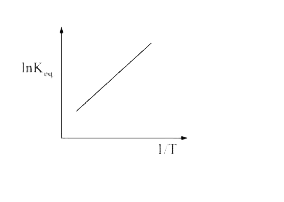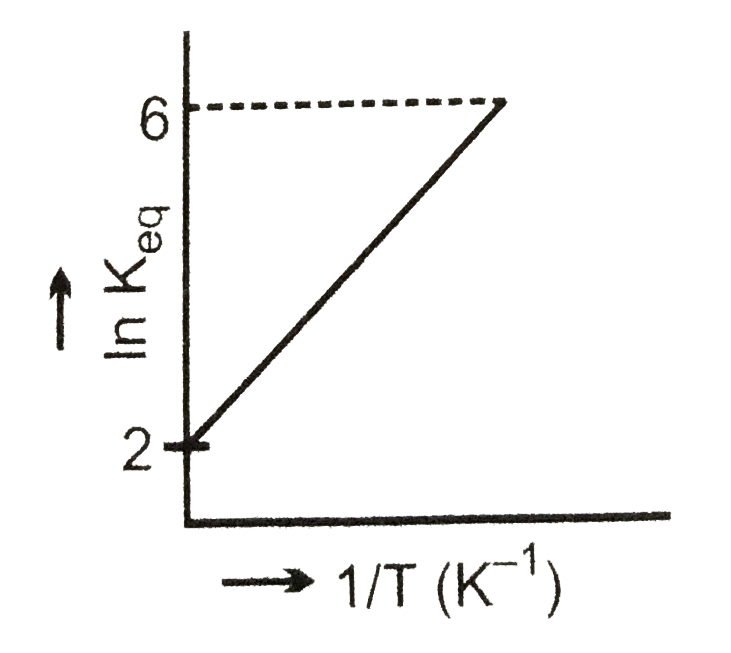The plot of ΔG versus temperature for the formation of oxides of elements is called
Ellingham diagram
Free energy curve
Entropy curve
Isobar
The correct Answer is:A
Step-by-Step Solution:
1. Understanding the Question: The question asks for the name of the plot that represents the relationship between Gibbs free energy change (ΔG) and temperature for the formation of oxides of elements.
2. Identifying the Options: The options provided are:
- Option 1: Ellingham diagram
- Option 2: Free energy curve
- Option 3: Entropy curve
- Option 4: Isobar
3. Analyzing the Correct Option:
- Ellingham Diagram: This diagram is specifically used to plot ΔG versus temperature for the formation of oxides of various metals. It helps in predicting the stability of the thermal reduction of ores and indicates the equilibrium temperature between a metal, its oxide, and oxygen.
- Free Energy Curve: This curve also represents ΔG versus temperature but is primarily used for phase diagrams, indicating stability based on free energy.
- Entropy Curve: This curve plots the change in entropy (ΔS) against temperature (T) and is related to heat absorption in isothermal processes.
- Isobar: This is a graph of volume versus temperature at constant pressure and does not involve ΔG.
4. Conclusion: Since the Ellingham diagram is specifically defined as the plot of ΔG versus temperature for the formation of oxides, the correct answer is Option 1: Ellingham diagram.
Final Answer:
The plot of ΔG versus temperature for the formation of oxides of elements is called the Ellingham diagram.
---
- Option 1: Ellingham diagram
- Option 2: Free energy curve
- Option 3: Entropy curve
- Option 4: Isobar
- Ellingham Diagram: This diagram is specifically used to plot ΔG versus temperature for the formation of oxides of various metals. It helps in predicting the stability of the thermal reduction of ores and indicates the equilibrium temperature between a metal, its oxide, and oxygen.
- Free Energy Curve: This curve also represents ΔG versus temperature but is primarily used for phase diagrams, indicating stability based on free energy.
- Entropy Curve: This curve plots the change in entropy (ΔS) against temperature (T) and is related to heat absorption in isothermal processes.
- Isobar: This is a graph of volume versus temperature at constant pressure and does not involve ΔG.
The plot of ΔG versus temperature for the formation of oxides of elements is called the Ellingham diagram.
Topper's Solved these Questions
- GENERAL PRINCIPLES AND PROCESSES OF ISOLATION OF ELEMENTSBOOK - AAKASH INSTITUTE ENGLISHCHAPTER - GENERAL PRINCIPLES AND PROCESSES OF ISOLATION OF ELEMENTSEXERCISE - Assignment (Section-A) Objective type Question
30 Videos
- GENERAL PRINCIPLES AND PROCESSES OF ISOLATION OF ELEMENTSBOOK - AAKASH INSTITUTE ENGLISHCHAPTER - GENERAL PRINCIPLES AND PROCESSES OF ISOLATION OF ELEMENTSEXERCISE - Assignment (Section-B) Objective type Question
25 Videos
- GENERAL PRINCIPLES AND PROCESSES OF ISOLATION OF ELEMENTSBOOK - AAKASH INSTITUTE ENGLISHCHAPTER - GENERAL PRINCIPLES AND PROCESSES OF ISOLATION OF ELEMENTSEXERCISE - Try yourself
33 Videos
- EQUILIBRIUMBOOK - AAKASH INSTITUTE ENGLISHCHAPTER - EQUILIBRIUMEXERCISE - ASSIGNMENT (SECTION -D)
20 Videos
- GENERAL PRINCIPLES AND PROCESSES OF ISOLATION OF ELEMENTSBOOK - AAKASH INSTITUTE ENGLISHCHAPTER - GENERAL PRINCIPLES AND PROCESSES OF ISOLATION OF ELEMENTSEXERCISE - Try Yourself
33 Videos
Similar Questions
The choice of reducing agent for metal oxide is decided by thermodynamic principles of metallurgy. ΔG must be negative. Ellingham diagram is a plot of ΔfG0 vs T for the formation of oxides of various elements. All the plots slope upwards when temperature increases. Each plot is a straight line except when some change in phase takes place. A metal will reduce the oxide of other metals which lie above it in this diagram.
At a temperature below 1623 K. Al cannot reduce
View SolutionElements required for ATP formation
View SolutionElements required for ATP formation
View SolutionA schematic plot of ln Keq versus inverse of temperature for a reaction is shown below: The reaction must be:

View SolutionA schematic plot of In Keq versus inverse o ftemperature for a reaction is shown below

the reaction must be:
View Solution(ΔH−ΔU) for the formation of carbon monoxide (CO) from its elements at 298K is
(R=8.314K−1mol−1)
View Solution(ΔH−ΔU) for the formation of carbon monoxide (CO) from its elements at 298K is
(R=8.314K−1mol−1)
View SolutionEllingham diagrams are plots of ΔG∘1 Vs T for the formation of
View SolutionThe plot of In k versus 1T is liner with slope of
View SolutionVolume versus temperature (V-T) graph of an ideal gas of equal number of moles is plotted as shown in the figure. Choose the correct alternative.
View Solution
